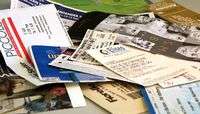Bus travel in former Yugoslavia
Due in part to the sorry state of railways as well as the high price of short-haul flights in relation to average incomes, buses (autobusi, singular autobus) are the most common form of public transport in Slovenia, Croatia, Bosnia and Herzegovina, Serbia, Kosovo, Montenegro and North Macedonia. There is heavy competition in the market and bigger players include:
- Lasta Beograd , the largest, part of the Eurolines network, connects Belgrade to the entire region and to most of Europe.
- Arriva Croatia, the largest provider of passenger transport in Croatia owned by international corporation Arriva Deutsche Bahn. The Group consist of the following companies: Autotrans, APP and Panturist..
- Centrotrans Sarajevo, from Bosnia and Herzegovina.
- Promet Makarska operates frequent buses from Zagreb to Split and Makarska.
- Niš Ekspres operates most of the bus services to and from Niš.
- Veolia Transport Slovenija operates services within Slovenia.
- Flixbus originally a German company they serve a handful of destinations in the region, particularly in Croatia and Slovenia

A bus station is called avtobusna postaja in Slovenia, autobusni kolodvor in Croatia, autobusna stanica in Bosnia and Herzegovina, autobuska stanica in Serbia and Montenegro, and avtobuska stanica in North Macedonia.
Fares and tickets

The fares are generally lower than in Western European countries. Croatia and Slovenia are a bit more expensive than Serbia, but even the longest overnight routes shouldn't cost more than 50 euro.
Tickets can be bought on the bus or from ticket booths at bus terminals. Payment is usually done in cash and in the local currency (Serbian dinar, Croatian kuna, Bosnian convertible mark, Macedonian denar or the euro). The euro is legal tender only in Slovenia, Montenegro and Kosovo, but it is sometimes accepted in the other countries as well.
Destinations within the former Yugoslavia are often treated as domestic for the purposes of ticket sales. For example, there is no need to show your passport when buying tickets from Niš to Zagreb or from Split to Mostar, but you must show it when buying tickets to Sofia, Bulgaria.
Return tickets (povratna karta) are available on most lines and give a discount of up to 20%. The return journey must be on the same company, and sometimes a reservation is required before boarding the return bus.
In Croatia and Bosnia and Herzegovina, access to the platform area at bus stations is usually unrestricted, so it is possible to board any bus with free seats and buy a ticket from the driver. On the other hand, in most Serbian cities either a valid bus ticket or a so-called "platform ticket" (peronska karta), which costs 130 dinara in Belgrade, is required to reach the platform area.
Especially in Croatia, bus passengers should be careful that they get a real ticket. Some bus conductors try not to sell real tickets to foreigners and put the fare in their own wallet. One should try to see how the conductor sells tickets to local passengers and complain when s/he tries to treat tourists differently. In Croatia, the conductor usually has a handheld device with a printer, and tickets are printed when they are sold. This is important since it can happen that a supervisor drives in front of the bus, stops the bus and checks the tickets. If you are caught without a valid ticket, the fine is at least twice the fare.
Routes and timetables
Information about routes and timetables is available at all bus terminals, usually in the local language. In Serbia and North Macedonia it is sometimes printed only in the Cyrillic alphabet. It is also possible to ask for information by phone or at ticket booths, but English isn't well spoken outside the largest cities and major tourist spots.
The websites of bus stations and bus companies also provide timetables, but these may be slightly out of date, inaccurate or incomplete. The most authoritative bus station websites are those of Ljubljana, Zagreb , Split and Belgrade. When searching for bus routes on the web, always input city names with the local diacritics: č ć š đ ž (copy and paste if necessary).
Bus fleets
While some companies operate brand-new Turkish, Chinese and/or locally assembled buses, most prefer second-hand vehicles from Germany, the Netherlands, Austria or Switzerland. As a result, German-language labels (e.g. Notausstieg for emergency exit) are commonly seen. There is no legal requirement, but many buses have electronic speed limiters set at either 100 or 105 kilometres per hour.
Notes
On longer highway journeys, the bus driver will always make at least one 15 to 20-minute rest stop at a gas station with a cafe and/or restaurant, public toilet and mini-market. On very long routes like Split-Belgrade, there are at least two stops.
When crossing borders, either a police officer will board the bus, collect all the passports and review them at their booth, or you will be asked to leave the bus and present your passport yourself.
Smoking is officially banned on all buses, but it is still a relatively common practice among drivers to open their window and light up while driving.
There is an unregulated but very common practice of sending packages via intercity buses. It is customary to write the intended recipient's name, city and mobile phone number on the package and give a small tip (10 kuna/100 dinara for shorter routes, 20 kuna/200 dinara for longer routes) to the driver.